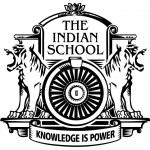EPIC Workshop and Morning Raga Concert at IHC
Creativity is thinking up new things. Innovation is doing new things.
A workshop aimed at communicating the scope for creativity and individual expression in Hindustani classical music was held on 21st February 2016 at the Indian Habitat Centre. It was conducted by Pandit Satyasheel Deshpande, accompanied by Rupak Kharvandikar (Tabla) and his son and disciple, Srijan Deshpande.
Satyasheel Deshpande is a uniquely creative Hindustani classical vocalist, widely known for his contribution to the world of music as an imaginative performer, a brilliant composer, an acclaimed author and an exceptionally insightful musicologist. A disciple of the legendary Pandit Kumar Gandharva, Satyasheelji was exposed to a wide range of musical bandishes, genres, artists and gharanas from early. Satyasheelji also trained in lighter forms of music, especially the thumri and ghazal. His love for language and his command over both Hindi and Marathi made him an acclaimed author and a sought-after speaker on various subjects relating to music.
The workshop was attended by 9 students, namely, Chinmaya Iyer (XI-B), Saruby Sharma (X-D), Jivesh Malawaliya (X-C), Karandeep Singh (X-A), Vadish Kardam (IX-D), Shivangini Sharma (IX-C), Milanpreet Kaur (IX-B), Shrey Gogia (VIII-C) and Dhriti Chatterjee (VIII-A). They were accompanied by their music teachers, Ms. Suchismitta Chatterjee and Mr. Sanjiv Chaudhary.
Pandit Satyasheel Deshpande believes that the science within Indian classical music has made creativity possible. He gave an example of the song Kajra Re, singing it in different ways to break the monotony. He explained that only Hindustani classical music has divisions in a rhythmic cycle. Even Carnatic music does not have such a division. Hindustani classical music is therefore, not predefined and leaves immense scope for improvement and innovation.
At the workshop SatyasheelJi gave examples to explain the various styles of improvisations or gharanas, to equip participants with a deeper understanding of Hindustani music. He explained how Kirana Gharana does not give importance to the words of a bandish, but emphasises on the swaras. He told participants that the Gwalior gharana is the source of every gharana, just as Gangotri is the source of the Ganga and its tributaries.
Satyasheelji lamented about todays music competitions which did not encourage children to innovate, but simply expected them to deliver the styles of established singers. He emphasised that we should not memorise Hindustani music but should understand each raag with depth and try creating our own alaaps or tanas. We should not be afraid of experimenting with innovation. The workshop truly motivated us all and we began to view Hindustani classical music with a fresh eye.
The next day, Morning Ragas, a concert was presented by Satyasheelji. He was accompanied by Srijan Deshpande, Shyama Kumar Bharati (Harmonium) and Rupak Kharvandikar (Tabla). Saruby and Shivangini Sharma attended the concert. He sang JaJa Re and Been Bajai Mai Ri of Miyanki Todi, one of the most important ragas of the Todi family, supposedly a creation of the legendary vocalist Tansen. He even sang Raag Jaun Sindhu and Raag Gaud Sarang. It was a beautiful morning concert and we enjoyed it thoroughly.
We look forward to more such workshops and concerts in the future to strengthen what we have learnt this far.
Saruby Sharma (X-D).













